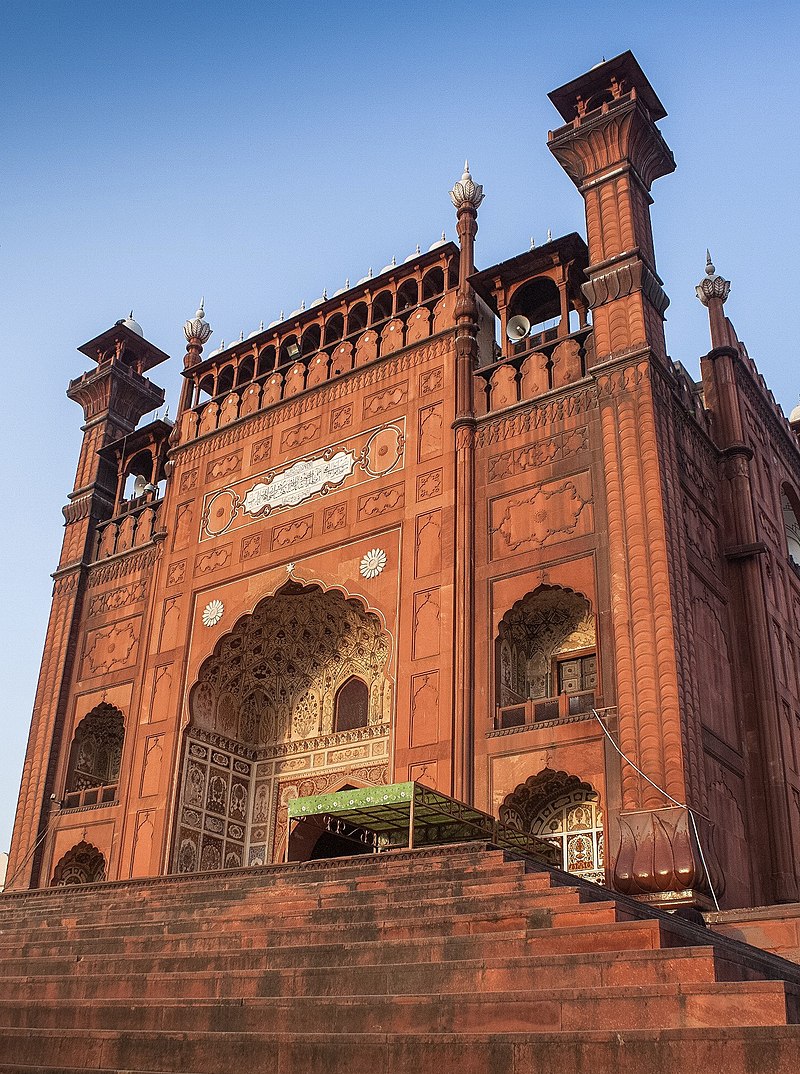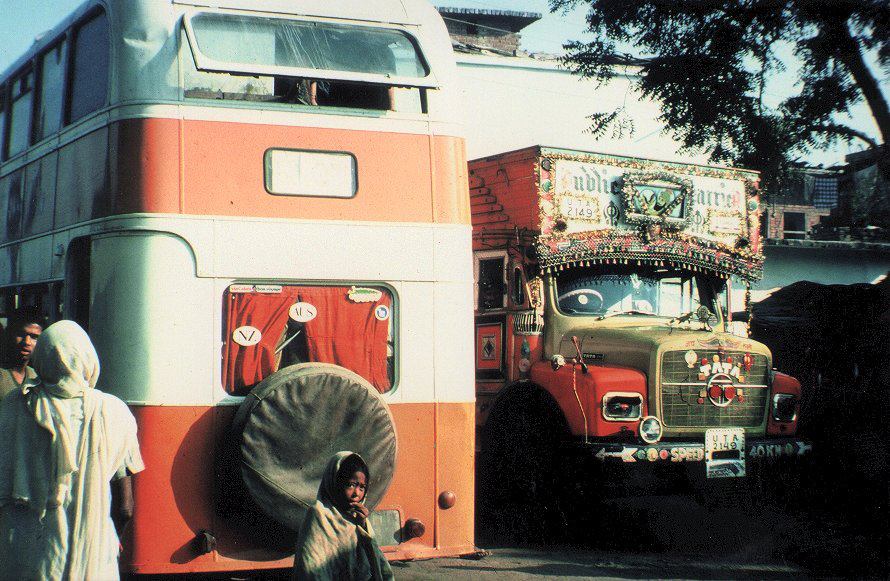
AsianOverland.net
Tour Guide - Itinerary
Asian Overland Sydney to London
Started 22/06/2022 Finished 21/06/2023365 Days ITINERARY
Day 315 date 02/05/2023BADSHAHI MOSQUE to LAHORE, PAKISTAN
ASIANOVERLAND.NET SYDNEY TO LONDON DAY 121/315/33: LAHORE, PAKISTAN
August 1980 and 20 October, 1980
Lahore's eminence began in 1584, when the Mughal Emperor Akbar ordered a palace to be built at what is now the Lahore Fort after shifting his capital to Lahore from Fatehpur Sikri. This started a Mughal architectural explosion in Lahore, capital of the Pakistani province of Punjab, and one of the most beautiful cities in the world.
The sixth Mughal emperor, Aurangzeb, chose Lahore as the site for his new imperial mosque in 1671, and the Badshahi Mosque (The Royal Mosque) was opened two years later, in 1673. Aurangzeb was not a major patron of art and architecture and instead focused on military conquests which added 3 million square kilometres to the Mughal realm. The mosque was built to commemorate Aurangzeb's military campaigns in southern India against the Maratha king Shivaji. As a symbol of the mosque's importance, it was built directly across from the Lahore Fort and its Alamgiri Gate, which was concurrently built by Aurangzeb during construction of the mosque.
The Mughal era congregational mosque is west of Lahore Fort along the outskirts of the Walled City of Lahore, and is one of Lahore's most iconic landmarks. The mosque is an important example of Mughal architecture, with an exterior decorated with carved red sandstone with marble inlay. It remains the largest mosque of the Mughal era.
On 7 July 1799, the Sikh army of Ranjit Singh took control of Lahore. After the capture of the city, Maharaja Ranjit Singh used the mosque’s vast courtyard as a stable for his army horses, and its 80 Hujras (small study rooms surrounding the courtyard) as quarters for his soldiers and military stores. In 1818, he built a marble edifice in the Hazuri Bagh facing the mosque, known as the Hazuri Bagh Baradari, which he used as his official royal court of audience.
Our Top Deck Travel itinerary says we should be travelling between Lahore and the Khyber Pass in Afghanistan, but Afghanistan is not open for tourists, so we bypassed Afghanistan on both our eastbound and westbound overland trips in 1980.
The Great Game started by Britain against Russia in the early 19th century continues in Afghanistan, so my daily spiel reflects on how The Great Game started (according to Wikipedia):
“Britain feared that Persia and Turkey would become protectorates of Russia. This would change Britain's perception of the world, and its response was The Great Game. Britain had no intention of getting involved in the Middle East, but it did envision a series of buffer states between the British and Russian Empires that included Turkey, Persia, plus the Khanate of Khiva and the Khanate of Bukhara that would grow from future trade. Behind these buffer states would be their protected states stretching from the Persian Gulf to India and up into the Emirate of Afghanistan, with British sea-power protecting trade sea-lanes. Access to Afghanistan was to be through developing trade routes along the Indus and Sutlej rivers using steam-powered boats, and therefore access through the Sind and Punjab regions would be required. Persia would have to give up its claim on Herat in Afghanistan. Afghanistan would need to be transformed from a group of warring principalities into one state ruled by an ally whose foreign relations would be conducted on his behalf by the Governor-General and the Foreign Office.”
The strategy of "Divide and Rule" was also employed by Britain in the Indian subcontinent, where it backed various Indian states in conflicts between each other, as a means of consolidating its authority. The British used the “Divide and Rule” strategy to destroy the harmony between various religions and use it for its own benefit, as Kashmiri Indian politician Markandey Katju wrote in The Nation:
“It was Emperor Akbar who laid the foundation on which the Indian nation is still standing, his policy being continued by Jawaharlal Nehru and his colleagues who gave India a secular constitution. Up to 1857, there were no communal problems in India; all communal riots and animosity began after 1857. No doubt even before 1857, there were differences between Hindus and Muslims, the Hindus going to temples and the Muslims going to mosques, but there was no animosity. In fact, the Hindus and Muslims used to help each other; Hindus used to participate in Eid celebrations, and Muslims in Holi and Diwali. The Muslim rulers like the Mughals, Nawab of Awadh and Murshidabad, Tipu Sultan, etc were totally secular; they organised Ramlilas, participated in Holi, Diwali, etc.
In 1857, the ‘Great Mutiny’ broke out in which the Hindus and Muslims jointly fought against the British. This shocked the British government so much that after suppressing the Mutiny, they decided to start the policy of divide and rule (see online “History in the Service of Imperialism” by B.N. Pande). All communal riots began after 1857, artificially engineered by the British authorities. The British collector would secretly call the Hindu Pandit, pay him money, and tell him to speak against Muslims, and similarly he would secretly call the Maulvi, pay him money, and tell him to speak against Hindus. This communal poison was injected into our body politic year after year and decade after decade.”
So we didn’t travel through Afghanistan to or from Lahore. Instead, we drove via Balichistan on the eastbound overland; and took the train south from Lahore into the Indus River valley on the westbound overland. Our 1980 westbound Trip Book reads:
“Transit to Karachi.
Boarded the train to Karachi.
Three attempts to rest ourselves in seats.
Been invaded by Pakis most of the night but overall everything was bearable.
I slept like a log! ? Drug induced?”
© This work is copyright. Apart from any use permitted under the Copyright Act 1968, no part may be reproduced by any process, nor may any other exclusive right be exercised, without the permission of Peter Searle, peter@portseavillageresort.com; 1980-2024.
Website built by Justin O’Dea www.webdeveloperdocklands.com.au

_(2).jpg)



